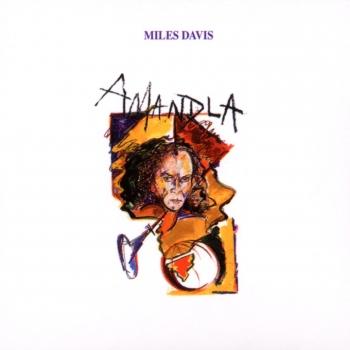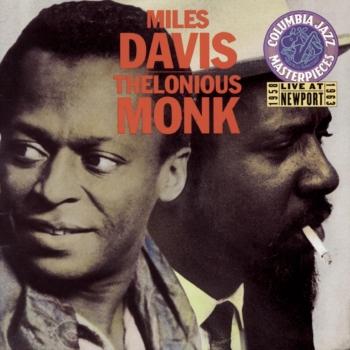
Blue Haze Remastered) Miles Davis
Album info
Album-Release:
1956
HRA-Release:
24.03.2016
Album including Album cover Booklet (PDF)
I`m sorry!
Dear HIGHRESAUDIO Visitor,
due to territorial constraints and also different releases dates in each country you currently can`t purchase this album. We are updating our release dates twice a week. So, please feel free to check from time-to-time, if the album is available for your country.
We suggest, that you bookmark the album and use our Short List function.
Thank you for your understanding and patience.
Yours sincerely, HIGHRESAUDIO
- 1 I'll Remember April 07:55
- 2 Four In One 04:04
- 3 Old Devil Moon 03:25
- 4 Smooch 03:08
- 5 Blue Haze 06:13
- 6 When Lights Are Low 03:29
- 7 Tune Up 03:56
- 8 Miles Ahead 04:28
Info for Blue Haze Remastered)
„Blue Haze documents two Prestige sessions from May 1953 and March 1954 (plus 'I'll Remember April,' with altoist Davey Schildkraut, from the April 3, 1954 session that yielded half of Walkin'). During this time, a resurgent Miles Davis began to zero in on his own style and sound, taking significant steps away from the rhythmic and harmonic devices of his mentor Dizzy Gillespie. Paralleling his recorded work for Blue Note, Davis was also working with some of the greatest rhythm players in the history of jazz. Blue Haze finds Davis the lone featured horn. 'When Lights Are Low' is one of Benny Carter's most famous melodies, and the song-like cadences suit the ripe, chipper tone of Davis' horn. John Lewis' Monk-ish chords signal the sprightly head to 'Tune Up,' as Percy Heath and Max Roach groove manfully along. 'Miles Ahead' is derived from Davis' earlier 'Milestones' (neither of which should be confused with subsequent titles and tunes for Columbia). Davis' loping solo illustrates his leisurely ease in constructing a melody, but his dancing eights with Roach illuminate what fires simmer beneath the surface. Cut by cut, this set documents the trumpeter's search for his ideal rhythm mates. Thanks to Heath, Art Blakey, and especially Horace Silver, Davis here sounds far more relaxed, swinging, and rhythmically complex on his famous melody 'Four.' Their interplay on 'Old Devil Moon' is a study in give and take, tension and release. And aroused as he is by Heath's booming blues beat, Blakey's ghostly sizzle cymbal, and Silver's taut accompaniment, Davis turns the title tune into as expressive a film noir blues as you're likely to hear this side of Raymond Chandler.“ (AMG)
Track #1 (April 3, 1954):
Miles Davis, trumpet
David Schildkraut, alto saxophone
Horace Silver, piano
Percy Heath, bass
Kenny Clarke, drums
Track #2, 3 and 5 (March 15, 1954):
Miles Davis, trumpet
Horace Silver, piano
Percy Heath, bass
Art Blakey, drums
Track #4, 6, 7 and 8 (May 19, 1953):
Miles Davis, trumpet
John Lewis, piano (not on 'Smooch')
Charles Mingus, piano ('Smooch' only)
Percy Heath, bass
Max Roach, drums
Recorded May 19, 1953 at WOR Studios, New York City; March 15 and April 3, 1954 at Van Gelder Studio, Hackensack, NJ
Engineered by Doug Hawkins, Rudy Van Gelder
Produced by Bob Weinstock, Ira Gitler
Digitally remastered
Please Note: we do not offer the 192 kHz version of this album, because there is no audible difference to the 96 kHz version!
Trumpeter Miles Davis grew up in East St. Louis, Illinois, just across the river from St. Louis, Missouri. His parents were affluent, and had the means to support his musical studies as a boy. He began playing the cornet at age nine, and received his first trumpet at around twelve or thirteen. He studied classical technique, and focused mainly on using a rich, clear tone, something that helped define his sound in later years.
As a teenager, he played in various bands in St. Louis, which was rich with jazz, as big bands often stopped there on tours throughout the Midwest and southern states. The most important experience he had was when he was asked to play in the Billy Eckstine band for a week as a substitute. The group included Charlie Parker, Dizzy Gillespie, and Sara Vaughan. After playing with these stars, Davis knew he had to move to New York to be at the heart of the jazz scene.
In Pursuit of Parker:
In 1944 Davis moved to New York City where he had earned a scholarship to study trumpet at the Juilliard School of Music. Upon arriving however, he sought after Charlie Parker, and meanwhile spent all of his time in jazz clubs listening to bebop. He was transfixed on the music, and grew utterly bored with his classical studies. After less than a year at Juilliard, he dropped out and tried his hand at performing jazz.
Although not particularly stunning, his playing was good enough to finally attract Charlie Parker, and Davis joined his quintet in 1945. He was often criticized for sounding inexperienced, and was compared unfavorably to Dizzy Gillespie and Fats Navarro, who were the leading trumpeters at the time. Both boasted stellar technique and range, neither of which Davis possessed. In spite of this, he made a lasting impression on those who heard him, and his career was soon set aloft.
Cool Jazz and a Rise to Fame:
Encouraged by composer and arranger Gil Evans, Davis formed a group in 1949 that consisted of nine musicians, including Lee Konitz and Gerry Mulligan. The group was larger than most bebop ensembles, and featured more detailed arrangements. The music was characterized by a more subdued mood than earlier styles, and came to be known as cool jazz. In 1949 Davis released the album Birth of the Cool (Captiol Records).
Change of artistic direction became central to Davis’ long and increasingly influential career. After dabbling in hard bop as a leader on four Prestige recordings featuring John Coltrane, he signed with Columbia records and made albums that featured Gil Evans’ arrangements for 19-piece orchestra. These were Miles Ahead, Porgy and Bess, Sketches of Spain, and Quiet Nights. He rose in popularity with these recordings, in part due to his signature sound, which he often enhanced by using a Harmon mute.
Kind of Blue and Beyond:
In 1959 Davis made his pivotal recording, Kind of Blue. It was a departure from all of his previous projects, abandoning complicated melodies for tunes that were sometimes only composed of two chords. This style became known as modal jazz, and it allows the soloist expressive freedom since he does not have to negotiate complex harmonies. Kind of Blue also featured John Coltrane, Cannonball Adderley, and Bill Evans. The album is one of the most influential in jazz, and is Columbia Records’ best-selling jazz record of all time.
In the mid 1960s Davis changed directions again, forming a group with Herbie Hancock, Wayne Shorter, Tony Williams, and Ron Carter. This group was known for the excellence of each individual member, and also for its unique performance approach. Each night the tunes would sound different, as the musicians would sometimes only loosely adhere to the song structures, and often transition from one right into the next. Each player was given the chance to develop his solos extensively. Like all of Davis’ previous groups, this quintet was highly influential.
Late Career:
Despite health problems, drug addiction, and strained personal relationships, Davis continued to play, changing his approach with each new project. In the late 60s and 70s, he began to experiment with electronic instruments, and grooves that were tinged with rock and funk music. Two famous recordings from this period are In a Silent Way and Bitches Brew. By the time the 1980s rolled around, Davis was not only a jazz legacy, but a pop icon, whose music, persona, and fashion style were legendary.
Davis died in 1991, as perhaps the most influential jazz artist ever. His vast body of work continues to be a source of inspiration for today’s musicians. (Jacob Teichroew, About.com Guide)
Booklet for Blue Haze Remastered)






































